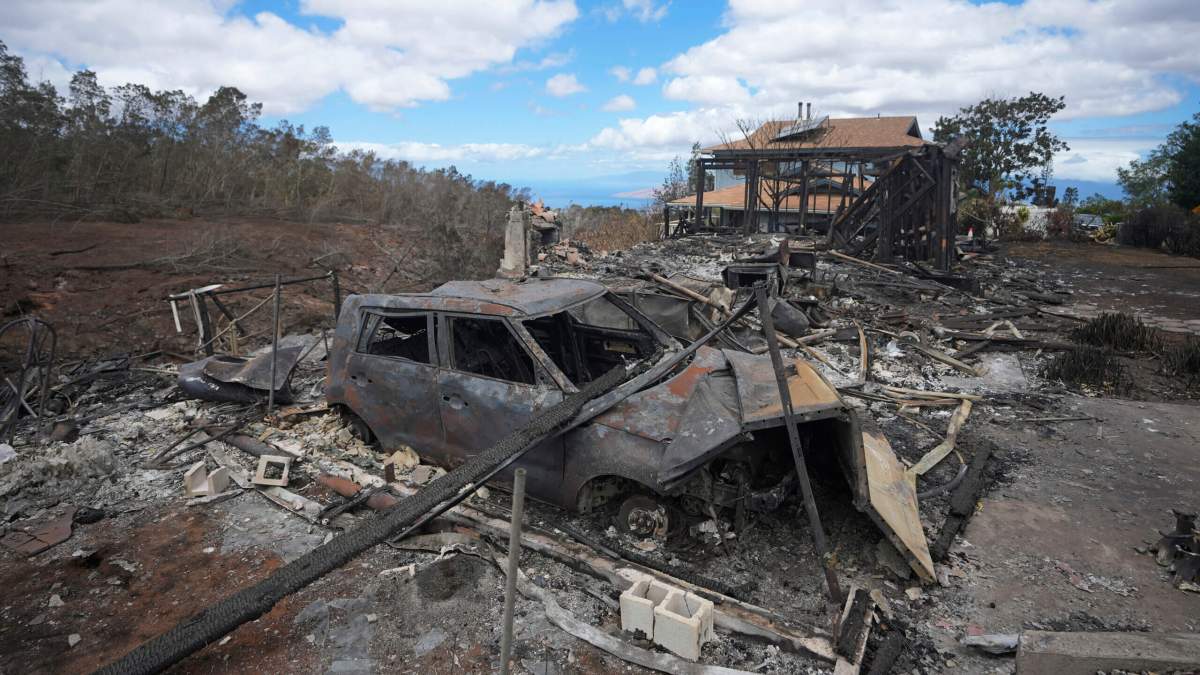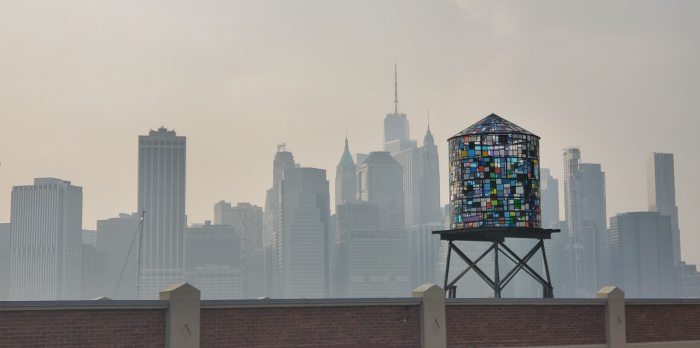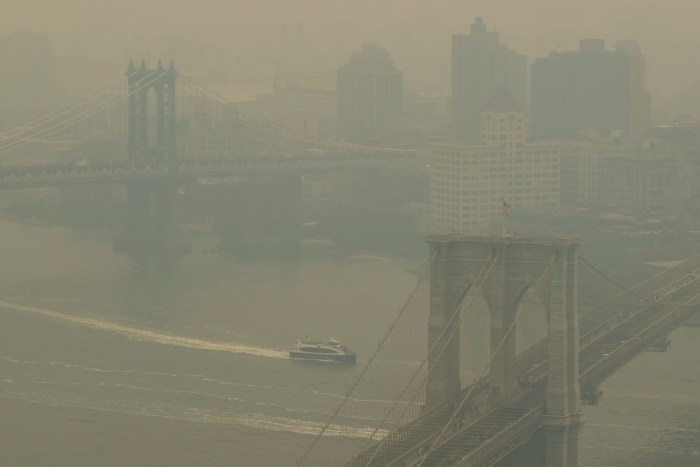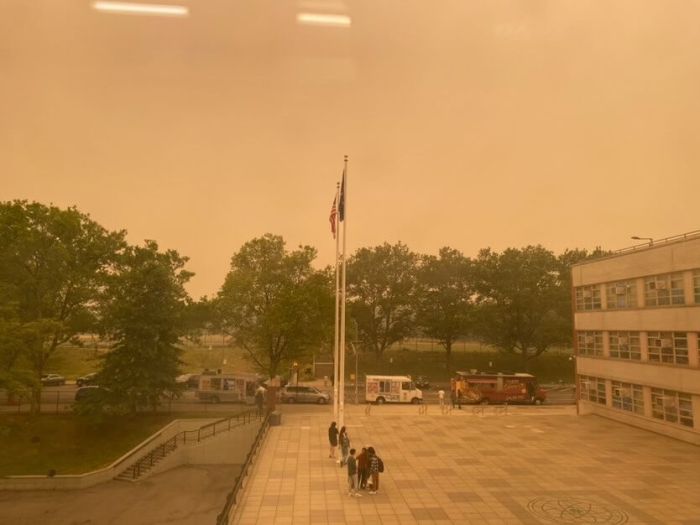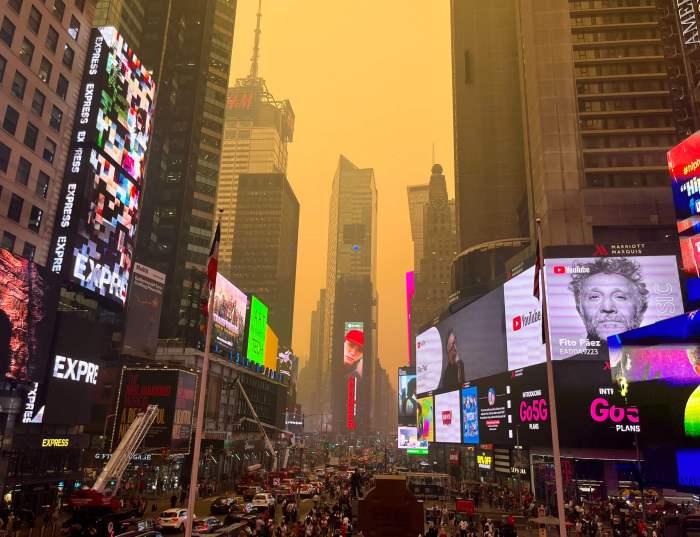Hawaii officials worked painstakingly to identify the 99 people confirmed killed in wildfires that ravaged Maui and expected to release the first names Tuesday, even as teams intensified the search for more dead in neighborhoods reduced to ash.
A week after a blaze tore through historic Lahaina, many who survived have started moving into hundreds of hotel rooms set aside for displaced locals while donations of food, ice, water and other essentials have poured in.
Crews using cadaver dogs have scoured about 25% of the search area, the police chief said Monday. Gov. Josh Green asked for patience and space to search properly as authorities became overwhelmed with requests to visit the burn area.
“For those people who have walked into Lahaina because they really wanted to see, know that they’re very likely walking on iwi,” he said at a news conference on Maui, using the Hawaiian word for “bones.”
Just three bodies have been identified so far and officials will start releasing names on Tuesday, according to Maui Police Chief John Pelletier, who renewed an appeal for families with missing relatives to provide DNA samples.
Green warned that scores more bodies could be found. The wildfires, some of which have not yet been fully contained, are already the deadliest in the U.S. in more than a century. Their cause was under investigation.
When asked Tuesday morning by Hawaii News Now if children are among the missing, Green said, “tragically, yes … When the bodies are smaller, we know it’s a child.”
He added that some of the sites being searched “are too much to share or see from just a human perspective.”
Another complicating factor, Green said, is that stormy weather is forecast for the weekend, prompting discussions on how to handle high winds. Officials are mulling whether to “preemptively power down or not for a short period of time, because right now all of the infrastructure is weaker.”
The local power utility has already faced criticism for not shutting off power as strong winds buffeted a parched area under high risk for fire. It’s not clear whether the utility’s equipment played any role in igniting the flames.
Hawaiian Electric Co. Inc. President and CEO Shelee Kimura said many factors go into a decision to cut power, including the impact on people who rely on specialized medical equipment and concerns that shutting off power in the fire area would have knocked out water pumps.
Green has said the flames on Maui raced as fast as a mile (1.6 kilometers) every minute in one area, fueled by dry grass and propelled by strong winds from a passing hurricane.
And he was conflicted about the anticipated storm.
“I want the rain, ironically, but that’s why we’re racing right now to do all the recovery that we can, because winds or heavy rain in that disaster setting, which it’s showing right now, it will make it even harder to get the final determination of who we lost,” Green said.
Authorities have paused a system that had allowed Lahaina residents and others to visit devastated areas with police permits. Kevin Eliason said when he was turned away, the line of cars waiting to get a permit was at least 3 miles (5 kilometers) long.
“It’s a joke,” Eliason said. “It’s just crazy. They didn’t expect, probably, tens of thousands of people to show up there.”
The blaze that swept into centuries-old Lahaina last week destroyed nearly every building in the town of 13,000. That fire has been 85% contained, according to the county. Another blaze known as the Upcountry fire has been 65% contained.
Even where the fire has retreated, authorities have warned that toxic byproducts may remain, including in drinking water, after the flames spewed poisonous fumes. That has left many unable to return home.
The Red Cross said 575 evacuees were spread across five shelters on Monday, including the War Memorial Gymnasium in Wailuku. Green said thousands of people will need housing for at least 36 weeks. He said Tuesday that some 450 hotel rooms and 1,000 Airbnb rentals were becoming available.
“We want to get everyone out of all of the shelters by week’s end,” he told Hawaii News Now.
More than 3,000 people have registered for federal assistance, according to the Federal Emergency Management Agency, and that number was expected to grow.
FEMA was providing $700 to displaced residents to cover the cost of food, water, first aid and medical supplies, in addition to qualifying coverage for the loss of homes and personal property.
The Biden administration was seeking $12 billion more for the government’s disaster relief fund as part of its supplemental funding request to Congress.
Green said “leaders all across the board” have helped by donating over a million pounds (454,000 kilograms) of food as well as ice, water, diapers and baby formula. Some active duty U.S. Marines have also joined the aid efforts.
“When people are hurting, the community steps up and takes care of each other,” Lt. Gov. Sylvia Luke said Monday.
As firefighters battled the flames last week, a flurry of court actions were lodged over water access.
Some state officials say there is not enough water available for firefighters in central Maui, and blame a recent ruling by an environmental judge. The ruling did not directly affect water supplies to Lahaina, the attorney general’s office said Monday.
On Wednesday morning, Judge Jeffrey Crabtree issued an order temporarily suspending for 48 hours the water caps he had imposed. He also authorized water distribution as requested by Maui fire officials, the county or the state until further notice.
But that wasn’t enough for the state attorney general’s office, which filed a petition with the state Supreme Court blaming Crabtree for the lack of water for firefighting. The state asked the court not to let Crabtree alter the amount of water to be diverted or to put a hold on his restrictions until the petition is resolved.
It’s part of a long-running battle between environmentalists and private companies over the diversion of water from streams that started during Hawaii’s sugar plantation past.



